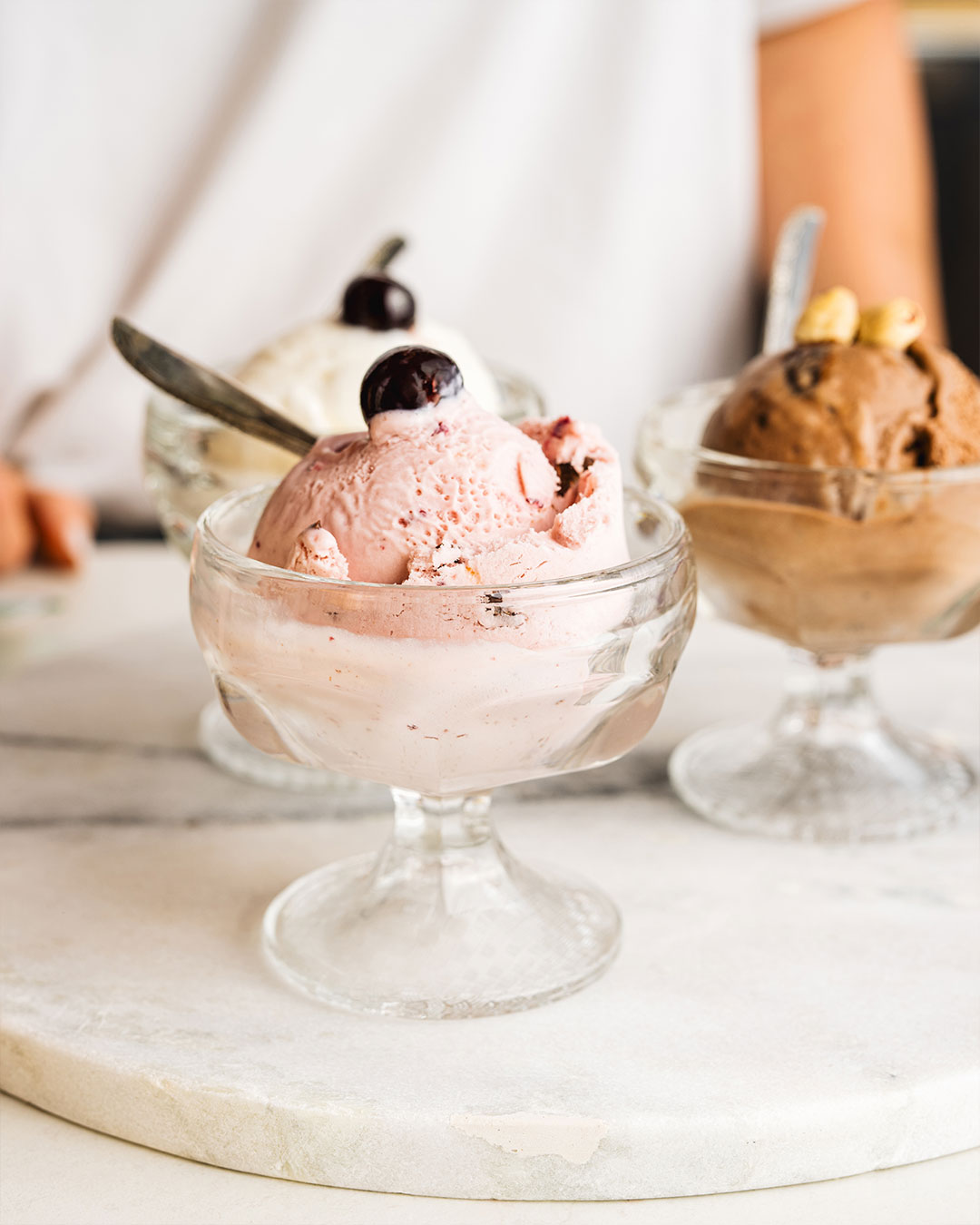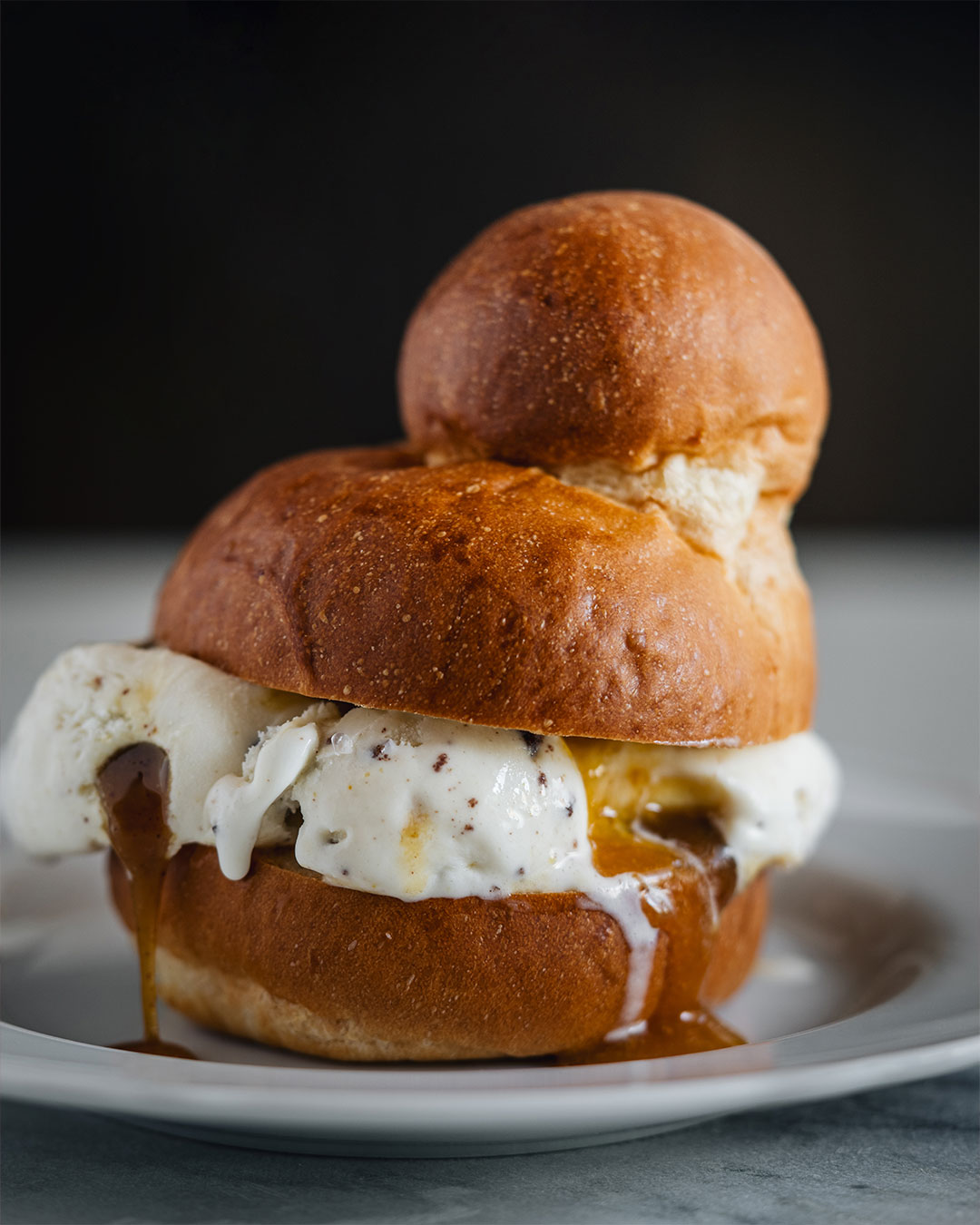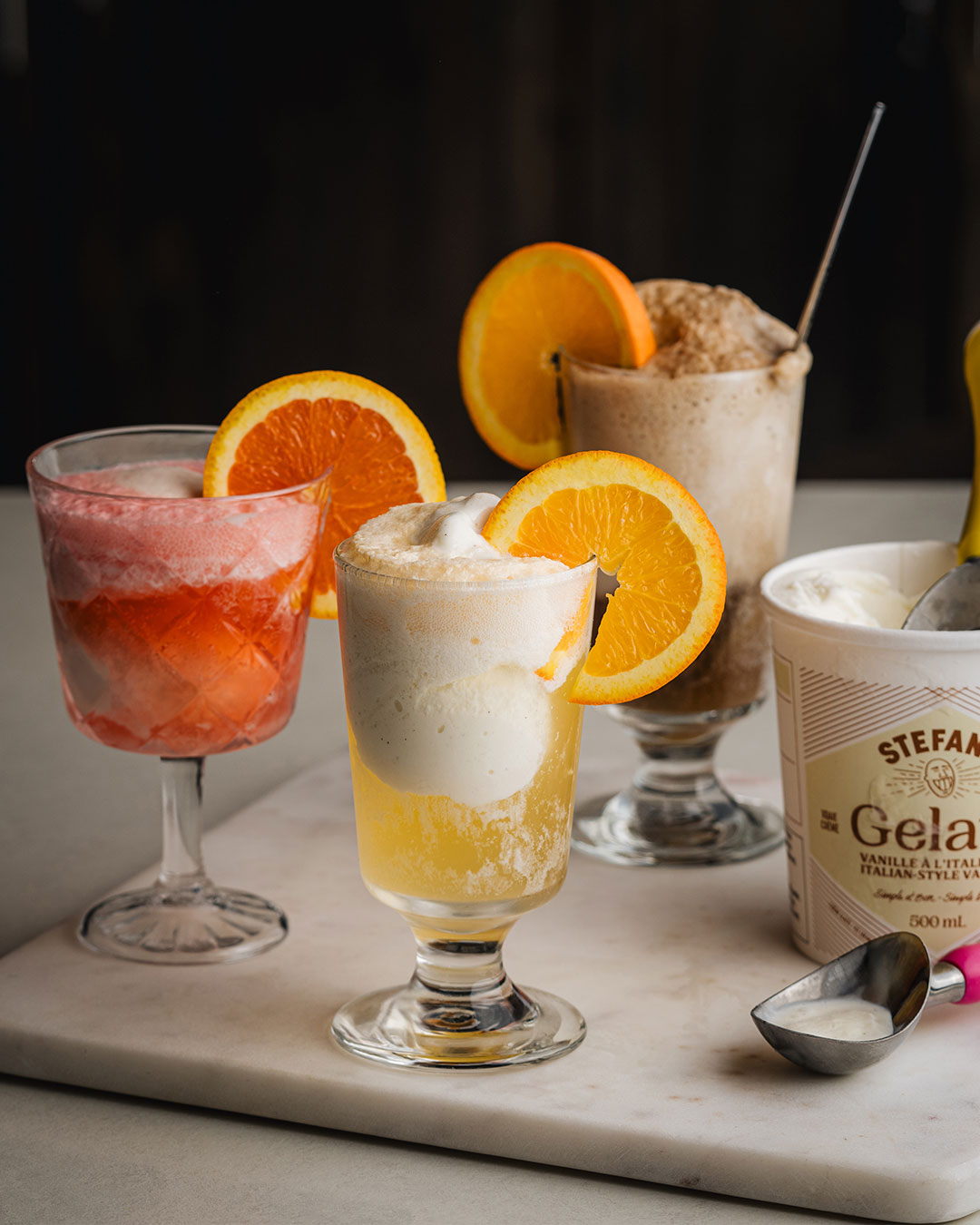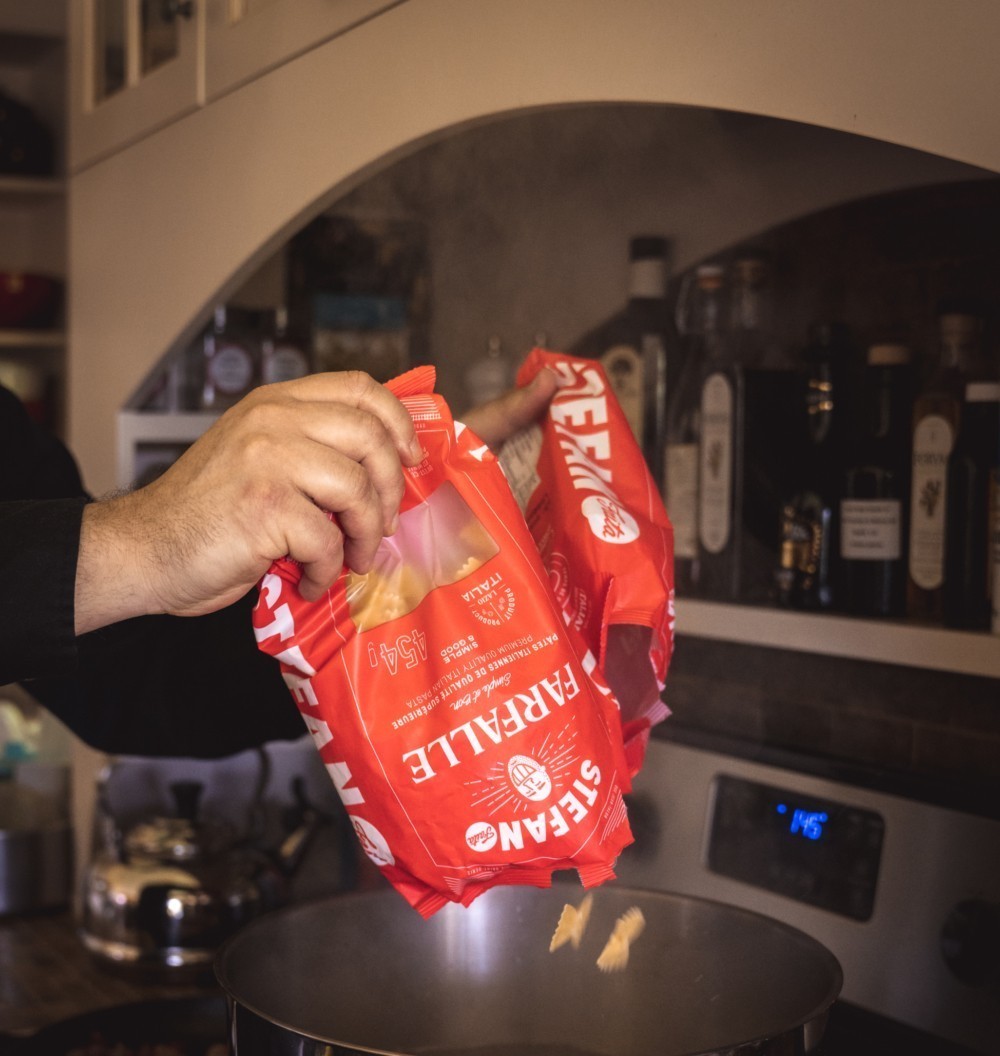The Frozen Treat of Our Dream: All About Gelato
As the morning is drawing to a close, a lady in designer clothing enjoys a small cone of fior di latte on her favourite bench of her favourite piazza. An overexcited child eagerly awaits their chance devour a cup of chocolate-strawberry gelato after school before going back out to play. A couple takes a romantic, late evening stroll, sharing two cones, one pistachio and one lemon. In Italy, there are almost as many gelato scenarios as there are flavours!
For Italians, gelato is so much more than a simple dessert or sweet treat for kids (and there’s definitely no bubble gum flavour or cone clown’s hats here!) It’s a fundamental ritual, an essential part of life for anyone aged 1 to 100. Cornetto, coppeta, brioche: the whole country loves it and everyone has a favourite. In the old country, gelato is a culinary experience, plain and simple. And of course, we want to bring that to you!
So, What Is It About Gelato?
Why is it so popular? While it definitely falls into the larger ice-cream family, there are some key differences. First of all, gelato typically contains more milk and less cream, there’s no egg yolk, and less air is incorporated at the mixing stage. Gelato contains less fat, is whipped less, and doesn’t contain any ice crystals. And, surprisingly enough, reducing all of those things actually makes it smoother while also allowing the flavours to pop more! By reducing the preparation to a bare minimum, the taste can take centre stage And because the flavour profiles are so concentrated, even the smallest bite is decadent and delicious. The smooth and delicate texture really lets the subtleties shine. OK, so that’s the science part out of the way, and as you can see, you don’t need a food science degree to understand that gelato truly is in a league of its own!
From the Pharaohs to Modern Day
Retracing gelato’s past means going back further than you’d think … to 550 BCE! It seems that pharaohs were serving up a delicious, frozen treat much like gelato to their guests. Of course, there was no such thing as a freezer back then, so they would use ice from the tops of mountains. They would travel back down the mountain with urns of compacted snow and add to it fruit, sugar, and honey. This practice spread throughout the Roman Empire, most likely through Sicily, where you can find mention of honey-based desserts made using snow from Mounts Etna and Vesuvius. Going to all that trouble to enjoy a frozen treat … they clearly knew they were onto something!
The birth of gelato as we know and love it today dates back to Florence and the Renaissance. A certain Bernardo Buontalenti created the prototype for the modern-day gelato to impress Caterina de’ Medici. The very first flavour? Probably fior di latte, which literally translates as “flower of milk” and is known to be the purest form of gelato. In fact, fior di latte is generally used nowadays as a benchmark judging the quality of any good gelateria. Over time, gelato became increasingly popular until eventually making its way over to the New World. In large part, you have the Italian immigrants to thank for bringing their skills and memories of the traditional dessert to this side of the Atlantic.
The Real Deal
As far as we’re concerned, there’s room for all kinds of frozen treats. But gelati (the plural of gelato) should be prepared following the rules of the art, and there are some easy-to-spot, key signs that give away the fakers. First of all, gelato should always be served with a spade and not a scoop. Secondly, those huge mounds of colourful, decorated gelato … you should maybe steer clear. Artisan gelato is fragile and needs to be stored in tightly sealed metal containers. And those flashy greens and pinks should also be avoided… nothing natural can stay that colour without colourants or additives. Thirdly, traditional gelato is served at a slightly warmer temperature than ice cream to optimize its texture and flavour, so it does melt quicker—all the more reason to enjoy it right away! Finally, in Italy, gelato is served in small portions. Partly because when we savour things in moderation, we tend to enjoy them more. And partly because Italians love to have a gelato almost every day in the summer. You see, gelato isn’t just delicious, it can also teach us all kinds of life lessons!
Once the traditional method is locked, all that’s left to do is let the imagination run wild and the local, in-season produce steal the show. There are probably more flavours than we can even name! Some love the classics, fior di latte, cioccolato, nocciola, pistacchio and stracciatella, whereas others (often the youngest gelato fans) tend to lean towards more adventurous flavours such as ginger, lychee, panettone, basil, and so on.
A Stefano Gelato Summer
As you already know, we work tirelessly to bring you a fantastic range of authentic products that give you access to the full Italian table experience. So, it should come as no surprise to learn that we’ve been working on our very own range of gelato!
Prepared with Canadian dairy and premium ingredients, our gelati are a tribute to Italian culture—with our own little personal touch. Elegant yet accessible, our flavours will take you on a trip around the Boot—these gelati are our love letter to the regional specialties that make the country’s culinary scene so incredible. Without starting any turf wars, we’re taking you from north to south so you can try a whole host of Italian flavours. Our chocolate and hazelnut gelato is reminiscent of Piedmont’s notorious nut, our classic Italian vanilla works as an homage to the Florentine origins of the treat, the cherry and dark chocolate is a nod to the Emilia-Romagna famous Amarena, and finally, in a tribute to Sicily’s most iconic dessert, we’ve even developed a cannoli-flavoured version! With such a delicious collection, you’ll have even more reasons to do as the Italians do and enjoy a little frozen treat on the daily!









